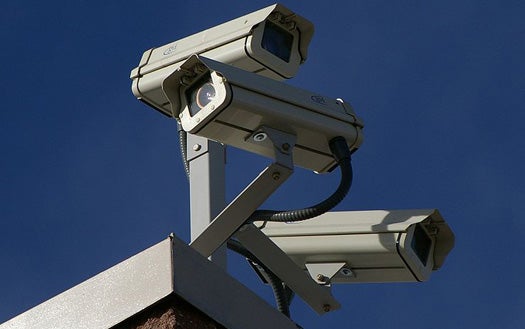Smart Computer-Vision Systems To Spot Prison Riots Before They Happen
Add corrections officers to the list of workers at risk of being replaced by machines. Recently demonstrated computer-vision systems can...

Add corrections officers to the list of workers at risk of being replaced by machines. Recently demonstrated computer-vision systems can analyze imagery provided by cameras perched in prison yards, recognizing faces, gestures, and unfolding incidents and warning guards if, say, two groups of inmates appear hostile. It’s one of a smattering of experimental computer-vision systems highlighted in a New York Times piece examining how smart, observant computers may soon document our every move.
Computer-vision isn’t new – researchers have been developing the technology as long as they’ve been chasing artificial intelligence. But recent strides could soon introduce machine observers into many corners of society, from institutions like hospitals and schools to the workplace and public streets. Computer vision systems can now read a person’s face to determine his or her heart rate, register a person’s emotional response to a product, or recognize behavioral patterns.
As such, many see computer-vision as the future of robotics. DARPA is certainly wise to its security and counterterrorism potential, having launched a program called Mind’s Eye to develop machines that can analyze visual data and communicate it to other computers or humans, even making decisions based on what they see. And perhaps there’s no better example of its proliferation than Microsoft’s Kinect addition for Xbox 360, which introduces a machine vision peripheral into the living room (the company is reportedly flirting with the idea of using the Kinect to target marketing to viewers and measure their responses to it).
The implications of that kind of tech are vast; whereas human observers can be distracted, lazy, or overwhelmed, robot observers are always vigilant and able to draw on huge databases of information. Mashed up with a citywide surveillance system like those common in the UK, facial recognition software could locate and track a lost child or a suspected evildoer while at the same time monitoring traffic patterns and issuing weather advisories.
But will complex computer-vision systems go mainstream in 2011? Likely not. For one, though the hardware exists to collect more (and more detailed) visual data than ever before, the software has not developed as rapidly. Instruments like the Air Force’s Gorgon Stare – a nine-camera UAV attachment that can capture footage of an entire city all at once – are ready for deployment, but software that can sort through all that visual data and analyze it for trends, patterns, and other relevant info hasn’t yet caught up.
But while technological developments will close the gap between computer-vision hardware and software in coming years, privacy concerns will be the largest obstacle to its deployment. While systems that monitor prison yards for fistfights or remind hospital workers to wash their hands will likely be adopted without a fuss, systems that recognize faces or track citizens’ movements through cities are going to be a much harder sell.